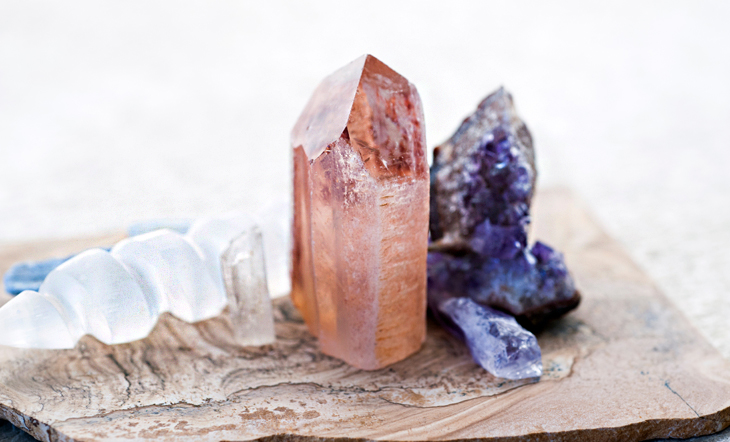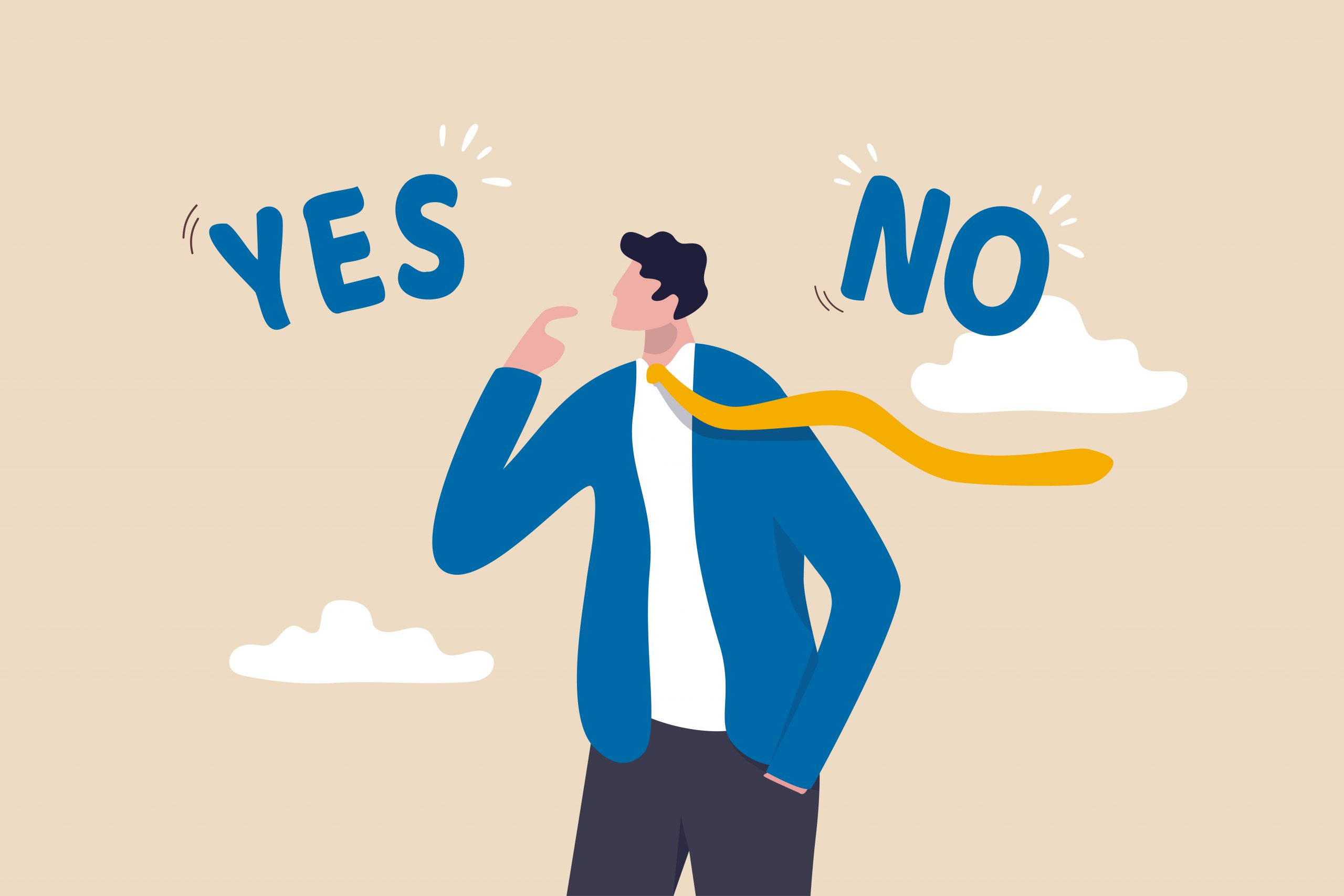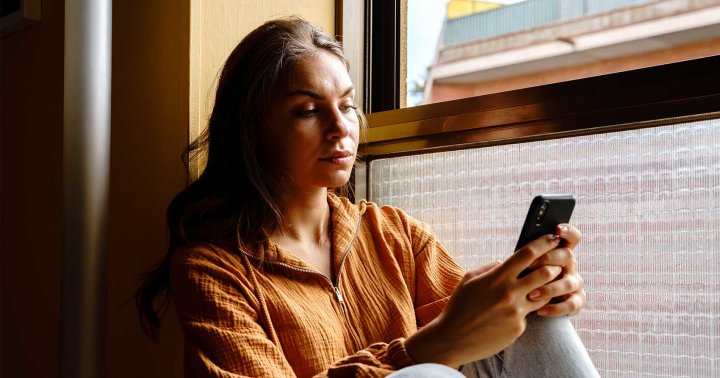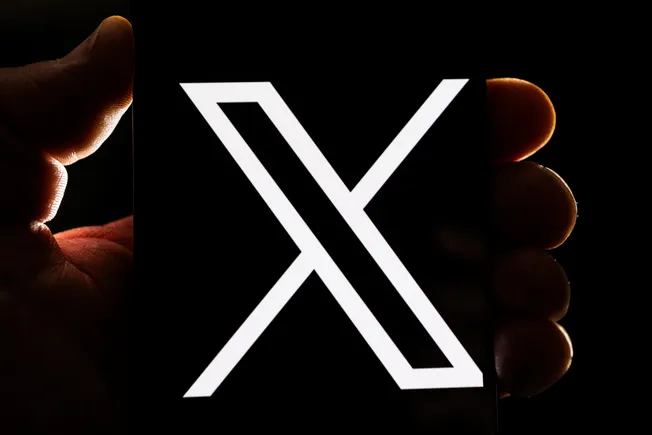How to Stay Calm In the Midst of Chaos
Sharon Salzberg on the power of equanimity — the essence of complete presence. The post How to Stay Calm In the Midst of Chaos appeared first on Lions Roar.
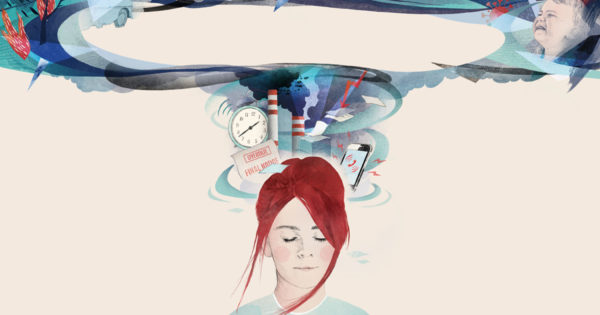
Sharon Salzberg on the power of equanimity.

Illustration by Dóra Kisteleki.
How do we navigate the overall unruliness of life, so filled as it is with urgencies—tasks left undone, friends who need help, health problems, financial pressures, family crises, community crises, world crises? How do we sustain ourselves, our sanity, our open hearts and clear vision in the face of these ongoing challenges? In Buddhist psychology, the answer is equanimity.
When I think of equanimity, I turn to the Pali word upekkha, which is most effectively translated as balance, often the balance born from wisdom. For some, the word equanimity implies coolness, indifference, or even fear masquerading as being “just fine.” A teenager shrugging and saying, “Whatever,” is a perfect example of that particular impression of equanimity. It feels mean, doesn’t it, as you’re trying to offer care or help, to be met with a “Whatever”?
We can choose not to make an enemy of our feelings, as intense as they may be.
Another idea that people presume for the meaning of equanimity is passivity. In that view, if you approach bad things with equanimity, maybe you’re just being a doormat or a dry leaf asking to be blown about by the winds of change.
The word balance itself can also be misunderstood. Sometimes it’s dismissed as a forced or constrained state achieved through valiantly propping something up (like cheerfulness) while simultaneously pushing something else down (like sorrow). Or holding both pleasure and pain in a tight fist, hoping the pain doesn’t leap out of your hand to take over. Balance is readily seen as mediocrity, something bland, a series of concessions that takes you to the lowest common denominator.
A few years ago, I was at a marketing meeting related to a program I was involved in at the Garrison Institute. For four years, we had offered yoga and meditation as resilience skills for frontline workers in domestic violence shelters. At that point, the program was exploring expanding that skills training to international humanitarian aid workers, which required rewriting all of the material, so we gathered to talk about how to do that.
I tried to explain the changes I had seen the frontline workers go through during the program, and I found myself apologizing: “I know it’s not an exciting word or a compelling word—it can easily sound kind of boring—but an enormous benefit described by them was an increase in balance.”
At that point, every one of the marketing team members laughed. “You know who really likes the word balance?” one of them asked. “Anyone who feels out of balance. That’s a lot of people!”
Feeling Intensity Without Being Overwhelmed
The kind of balance I’m talking about is not a measurement of how much time you spend doing one thing and then another, trying to create equality between them. Instead, it has to do with having perspective on life, and the effort you’re putting out, and the changes you’re going through. We establish this sense of balance within. It demands of us wisdom, and it gives us a growing sense of peace.
Balance doesn’t come from wiping out all feeling. We don’t have many models for navigating strong emotions in a more balanced way. Many of us are conditioned toward extremes. When it comes to feeling painful emotions like anger, we may get lost in them, such that they become toxic and seemingly inescapable. We may think there’s no way out, and we come to identify with our feelings completely: I’m an angry person, and I always will be.
On the other hand, we may tend to feel an impulse to turn away from tough feelings—to swallow them, deny them, distract ourselves. We don’t have many models for feeling strong emotions in a more balanced way. It’s an uncommon trait.
Equanimity is what frees us from these dynamics; we can learn to be present with emotions without falling into the extremes of overwhelm or denial. Equanimity is the state in which we can recognize an emotion like anger—and even feel its full intensity—but also pay attention to choosing how we will respond to a given feeling, thought, or circumstance.
One of my favorite illustrations of this phenomenon comes from Andrés Gonzaléz of the Holistic Life Foundation. He told me the story of eight-year-old Janaisa, one of the girls in the after-school program he helps run, who had a history of getting into fights with her peers. “Boys or girls, it didn’t matter, they would make fun of her and she’d knock them out,” he says. But then one day in the gym, when another girl made a disparaging remark about her, Janaisa grabbed her and slammed her against the wall. “She then silently looked at the girl,” recalled Andrés, “and then dropped her, saying, ‘You’d better be glad I meditate.’”
We can choose not to make an enemy of our feelings, as intense as they may be. Instead, we can expand our awareness and allow those feelings to come up. And we can allow them to move and shift. That space brings the wisdom that keeps us from getting lost in immediate reactivity. That freedom is the essence of equanimity.
A Living Gyroscope
Before I began meditating, when I thought of being out of balance, I would visualize a hand holding an old-fashioned scale, where one of the weighted brass plates was a bit lower than the other. But that image didn’t quite capture the way I actually felt when what I needed was some equanimity.
As life twists and turns, often we try to convey the impression that we’ve got it all together. But sometimes we maintain the appearance of steadiness only by staying in a state of tension so high that our emotional equilibrium can be blown off course by the mildest of breezes. Is it truly a life in balance if it requires so much effort? Ease is part of what we want: to feel unrestricted, peaceful, and free, to be able to respond appropriately to our world as it changes.
Watch a gyroscope in motion and you’ll see the wonder of the simple way it maintains a perfect balance.
I’ve come to think that a better image for balance is a gyroscope. The gyroscope is a wonderful visual representation of equanimity: the ability to find calm and steadiness under stress. That balance is loose and limber, capable of ducking some of what’s coming and getting quickly back to true.
Watch a gyroscope in motion and you’ll see the wonder of the simple way it maintains a perfect balance. The core of the gyroscope, its axis, spins with such power that it keeps the big circle around it well balanced. Although constantly in motion, the gyroscope is stable, adjusting to whatever comes its way. A gust of wind or a hard knock on the table will send a spinning top tumbling, but not a gyroscope. Try to knock it over and it gracefully and steadily rights itself.
As we navigate through circumstances, we can learn to be more agile and responsive instead of reactive. The balance of a gyroscope comes from its strong core—its central, stable energy. A sense of meaning in our lives can give us that core, lifting our aspirations, strengthening us in adversity, helping us have a sense of who we are and what we care about in spite of changing situations.
The Upaya Zen Center co-abbot, Joshin, talked to me about growing up in Brooklyn in a poor family with an alcoholic father and how he found a strong enough center to get him through:
I had these Catholic roots. Even as a young kid, I took a lot of comfort in the images of Saint Francis, the pauper, and Jesus, who loved outcasts. Those stories always moved me a lot. Somehow, I could identify with them. Religious life offered me what I thought was a way out. When I joined the Dominicans, the vow of poverty was a step up for me. I entered the Dominicans with ten dollars in my pocket, and you had to hand in all your money when you went in. And then they gave me twenty-five dollars back as my monthly stipend. So I thought, Oh, okay, you know, I could do with twenty-five dollars a month. In this sense, religious life was an escape—it started out as a way of finding some safety for myself. But this transformed over time. I developed a sense of spiritual self that was bigger than the hardships of my life. Religious life gave me a sense that I wasn’t just that. Even though I left the Dominicans, as I look back at that time, it gave me a sense of meaning. It gave me a way to use my experience, to develop a life of service, to develop a life that seemed to have purpose.
Discovering (or rediscovering) a sense of purpose begins with identifying and examining our most deeply held values. When we align our actions with those values or concerns that have centering power in our lives—those we’re most devoted to, that form the passionate core of what we care about—our actions are empowered, whatever the challenge.
Bernice Johnson Reagon, a singer with Sweet Honey in the Rock, was a dedicated activist in the early sixties. Recalling the danger she and her friends faced in challenging segregation in Georgia, she said, “Now I sit back and look at some of the things we did, and I say, ‘What in the world came over us?’ But death had nothing to do with what we were doing. If somebody shot us, we would be dead. And when people died, we cried and went to funerals. And we went and did the next thing the next day, because it was really beyond life and death. It was really like sometimes you know what you’re supposed to be doing.”
When we have a sense of what we are supposed to be doing and we then go out and do it, we forge a center and reinforce the core strength we can return to and rely on again and again.
We also strengthen the core within ourselves by paying attention to the perimeter of the gyroscope as much as the axis. Defining a perimeter around us means we no longer consider ourselves completely responsible for absolutely everything. Even if life events are hard, we don’t have to embellish them to make them even harder: “This is going to last forever,” or “This has to be worked out right now,” or “This proves I’m worthless and ineffective.” The wisdom of the gyroscope says, “Breathe a bit so you can act, and appreciate what comes next.”
We may charge into situations imagining that maintaining control is the secret to making life work. We can affect things around us—that’s the whole point of taking action—but it’s not helpful to think we’re going to finally be in absolute control. That’s not going to happen, not even for a moment. We don’t wield control over who is going to get sick, who is going to get better, or the inevitable ups and downs of our activism. We cannot immediately direct everybody and everything in this world to our liking. Would that it were so!
We might act fervently, and hopefully we would, to alleviate suffering. But to imagine that we can decide the certain outcome of our efforts is like thinking we’re going to wake up in the morning one day, look in the mirror, and determine, “I’ve thought about it really carefully. I’ve weighed all the pros and cons, and I’ve decided I’m not going to die.” The body has its own nature. Certainly, we can affect that, and we can transform a lot and be very impactful, but death is not a decision we make.
We do everything we can, and then we need to let go of our expectation and disappointment. If we don’t, our fearful fantasies and shattered dreams will be endless. If we plant the seed of our effort with a willingness to do all that we can, plus the wisdom of knowing that we don’t do it all ourselves and that we cannot simply command everything to our liking, we won’t feel defeated by circumstances.
Equanimity Holds Everything
Equanimity can be described as the voice of wisdom, being open to everything, able to hold everything. Its essence is complete presence. Very early in my teaching career, we met with retreatants in fifteen-minute personal interviews, during which time we got to hear what was happening for them and respond. I quickly recognized how meeting with four people in a row, or even two, I could be encountering people with wildly different life experiences. One time, the first person I met with was recently engaged to be married and the second was utterly traumatized, grappling with the murder of her roommate.
I saw in those early days of meeting with people and being exposed to such widely fluctuating sets of circumstances that I really would need a heart as wide as the world to accommodate the shifts of pleasure and pain being presented and to be able to accompany each of these people on their own journey with all-embracing presence. It’s hard for us to allow our own or someone else’s pain fully if we are afraid it will steal our possibility for joy. It’s hard to allow joy its full expression if we have used it to avoid confronting the reality of pain.
The special kind of pain known as survivor guilt is a particularly challenging obstacle for those who have evaded terrible fates through what seems an accident of timing or birth. When you’re a survivor, to want anything more than what you’ve got can feel outrageous and selfish. Samantha Novick, a member of the Parkland community, has become well acquainted with this phenomenon. She told me that she has felt strange at times, because the various mindfulness classes and workshops that arose in the aftermath of the shooting and the sense of community that arose in response has often been amazing and exhilarating for her, and yet they came about only because of a horrific tragedy.
She asked me, “How do I move from one to the other?”
“I don’t think you do,” I told her. “I think we learn to hold both at the same time.”
I really believe that. Equanimity holds it all. Peace is not about moving away from or transcending all the pain in order to travel to an easeful, spacious realm of relief: we cradle both the immense sorrow and the wondrousness of life at the same time. Being able to be fully present with both is the gift equanimity gives us—spacious stillness, radiant calm.
Environmental activist and author Joanna Macy, in conversation with Krista Tippett on the On Being podcast, said, “[If] we can be fearless, to be with our pain, it turns. It doesn’t stay static.
“It only doesn’t change if we refuse to look at it. But when we look at it, when we take it in our hands, when we can just be with it and keep breathing, then it turns. It turns to reveal its other face, and the other face of our pain for the world is our love for the world, our absolutely inseparable connectedness with all life.”
Equanimity means being with pain and pleasure, joy and sorrow, in such a way that our hearts are fully open and also whole, intact. We can recognize what is true, even if painful, and also know peace. Equanimity doesn’t mean we have no feeling about anything; it’s not a state of blankness. Instead, it is the spaciousness that can relate to any feeling, any occurrence, any arising, and still be free.

 Tekef
Tekef 







